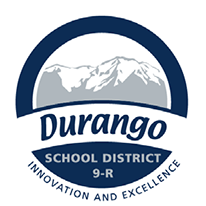The Board’s new legislative agenda outlines how Durango School District will advocate at the state and federal level for students, staff, and public education. The Board prioritizes meeting with lawmakers and educating the community so families and residents can be advocates as well.
For 2026, the Board’s top priorities are to:
- Ensure there is no reduction in funding for the 2026-27 school year and prevent the return of the Budget Stabilization Factor or any similar defunding mechanism.
- Support the implementation of recent school funding adequacy studies and help create a long-term blueprint for sustainable and adequate school funding.
The 2026 Legislative Platform focuses on three main areas: finance, student and staff success, and accountability. Key positions include:
- Finance: Supporting a long-term, equitable school funding blueprint; fully funding the federal Individuals with Disabilities Education Act (IDEA); creating permanent rural funding to address higher costs in rural districts; opposing unfunded mandates; providing tools and flexibility for staff housing; and raising the Mill Levy Override cap to help with recruitment and retention.
- Student and staff safety and success: Improving state standards and assessments so they more accurately reflect what students know and can do, especially as even high-performing districts currently see proficiency rates around 60%.
- Accountability: Limiting when the State Board of Education can overturn local charter school decisions; ensuring no public dollars are diverted to private K–12 schools via vouchers or other mechanisms; and requiring all publicly funded school options to serve students equitably and be held to consistent accountability and transparency standards.
The Board plans to work closely with the Colorado Association of School Boards (CASB) and with regional partners to amplify the collective voice of rural education advocates. Erika Brown, Board vice president and the Board’s legislative representative to CASB, said, “We’re hoping to collaborate as a regional voice for rural education since we have the same shared challenges.”
